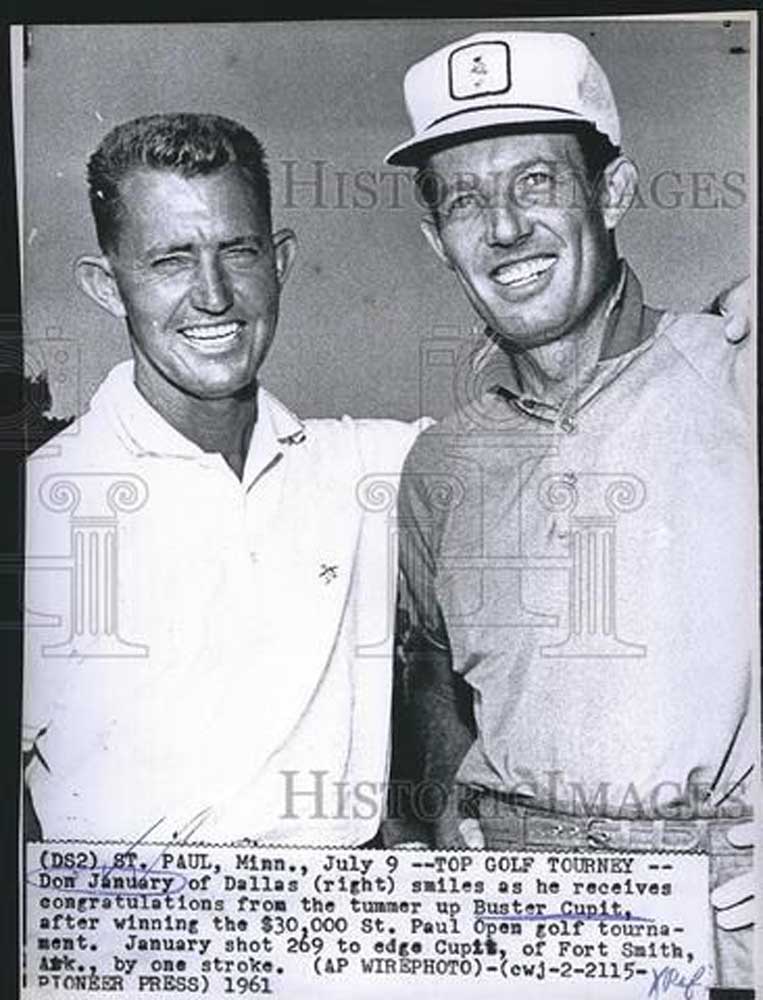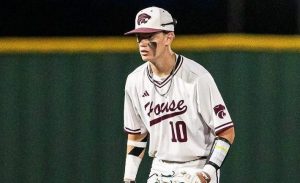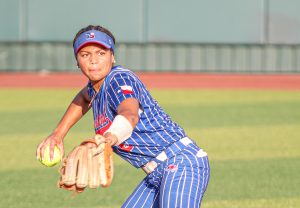East Texas Golf loses a legend in Buster Cupit
Published 9:08 pm Monday, July 17, 2023

- Buster Cupit (left) is shown with Dan January in St. Paul, Minn. January edged Cupit by a stroke in the St. Paul Open in 1961.
LONGVIEW — It was a revealing encounter that was to be repeated many times through the years.
Jacky Cupit was playing the Bing Crosby Pro-Am in the mid 1960s when he finished a hole at Cypress Point Club and saw the host standing behind the green.
Trending
“As I walked off, Bing introduced himself and said he wanted to meet me,” Cupit said. “Then he asked me, ‘how’s Buster doing?’”
Cupit went on to say that pleasantly surprised him as he learned Crosby and Buster had sat on a plane together going to the Carling World Open the previous year.
Such was the storybook life of John Winfred “Buster” Cupit, 96, who passed away Monday morning at his home near Longview Country Club, a golf course he owned and operated for 60 years.
The word icon is thrown around quite a bit these days but Buster Cupit was just that — an iconic gentleman in the game of golf. He was a product of East Texas, where he was born in 1927. He learned to play golf by caddying at a nine-hole course in Greggton, a community that no longer exists but is now considered the Pine Tree area west of downtown Longview.
One of the top golfers to come from Pine Tree, Rick Maxey, said wherever he went during his days of trying to play on Tour in the 1970s, when people learned he was from Longview, they always asked about Buster Cupit.
“I think he was the finest man to ever grip a golf club,” Maxey said.
Trending
When Buster was growing up during the great depression in the early 1930s, Bobby Jones was still a big deal with a long and loose swing developed by a Scottish teacher, Stewart Maiden, during the hickory shaft era. Perhaps that explains Buster’s signature outside to inside loop of a swing emulated by Jacky, who won four times on the PGA Tour and once lipped out a 12-foot putt to win the US Open in 1963.
I distinctly recall watching Buster hit 100-yard 8-iron shots on the range at The Links at Land’s End when he was in his late 80s. The tempo and repetition was mesmerizing.
In the early 1960s when Jacky was first coming out on tour after a sterling career at the University of Houston, it was Buster who mentored him. Jacky’s first win on tour was the 1961 Canadian Open and Buster tied for second. It is believed to be the only time on tour that brothers finished one-two in a tournament.
“He’s my best friend,” Jacky said just a few days ago. “And that’s kind of unusual for brothers, I think.”
It was former British Amateur champion Joe Conrad who said his most memorable moment on the old beer and barbecue circuit of East Texas during the early 1950s was edging Buster in a match at Pinecrest Country Club with an 11-year-old Jacky caddying for his older brother.
“I made a putt to win the match and as Buster was approaching me to shake hands, I looked over and Jacky was rolling on the ground crying,” Conrad said. “I could tell Buster didn’t lose very often and that it didn’t set well with his little brother.”
Buster said he realized he could play at the highest level when he attended the 1952 US Open at Northwood Club in Dallas. Six years later, at the first PGA Championship using a medal play format, Buster finished in a tie for eighth that earned his privileges on the tour the following year as well as an invitation to The Masters. He recounted the final nine holes when he had a chance to win but four-putted a par 3 after hitting a long iron stiff to the hole and had to watch as Dow Finsterwald took the title.
In 1961, the week before Jacky won the Canadian Open, Buster led the St. Paul Open Invitational in Minnesota and shot a 69 on Sunday only to be overtaken by one shot by Don January who shot a final round 64. It was a second place finish to be repeated the following week in Canada.
At about that time, in 1963, Buster purchased the Longview Country Club and ran it for 60 years with the daily one o’clock game becoming a tradition where golfers would arrive and choose teams. Buster always played and usually very well but was sensitive to not winning too much. That behavior was noticed by patrons and fellow competitors who universally described him as a gentleman, the epitome of what a golfer should be in terms of graciousness.
“I had the wonderful opportunity to play in a pro-am with Buster when I was a young kid in Mount Pleasant and he had a profound impact on me,” retired pastor John Redfearn of Tyler said. “I learned what a true pro was like on a golf course and tried to be the same way whenever I played.”
Buster was the third oldest of 11 Cupit children with only Jacky and his sister Mary in Atlanta surviving of the siblings. He lost his wife Joyce about 10 years ago and also a son, Guy, years ago. He is survived by two daughters — Debi and Terri.
It was Joyce who accompanied Buster to the 1957 US Open at Inverness Golf Club in Toledo, Ohio. Cupit was the pro at Hardscrabble Country Club in Fort Smith, Arkansas, and so the young couple drove many hours to reach the course in northern Ohio.
“Once I saw the pairings, I told Joyce we might as well go home because they have me paired the first two with a 17-year-old kid,” Buster said with a sly grin. “After two days, we both missed the cut but on the way home I told Joyce that the boy just might turn out to be the best golfer ever.”
Well, in addition to being a gentleman and a fine golfer, Buster was a pretty good judge of talent because that young boy in 1957 was Jack Nicklaus.
The Cupit influence made its way to Georgia and the West Coast. Buster’s nephew Chris Cupit is a former president of the Georgia Golf Association, the son of David Cupit, who was much loved in the Peach State. Another nephew, Mark, learned the game from Buster before delving into a career as golf course superintendent.
“He called me one day years ago and said he shot his age,” Chris said. “I said how old are you now, Uncle Buster and he said 58.”
Buster even one upped that feat when in 2013, at age 86, he toured Longview Country Club in 65 strokes. Shooting 21 strokes under your age is hard to fathom.
Finally, in the past several years, Buster could only ride the course and watch his friends play, often giving a pointer or just a word of wisdom. In that respect, he was cut from the same cloth as Harvey Penick, the much loved pro from Austin who taught Ben Crenshaw and Tom Kite. It was said that Penick never said anything negative when giving a golfer a lesson.
Buster was the same way, always encouraging people to be better on and off the golf course.
He will be greatly missed.







